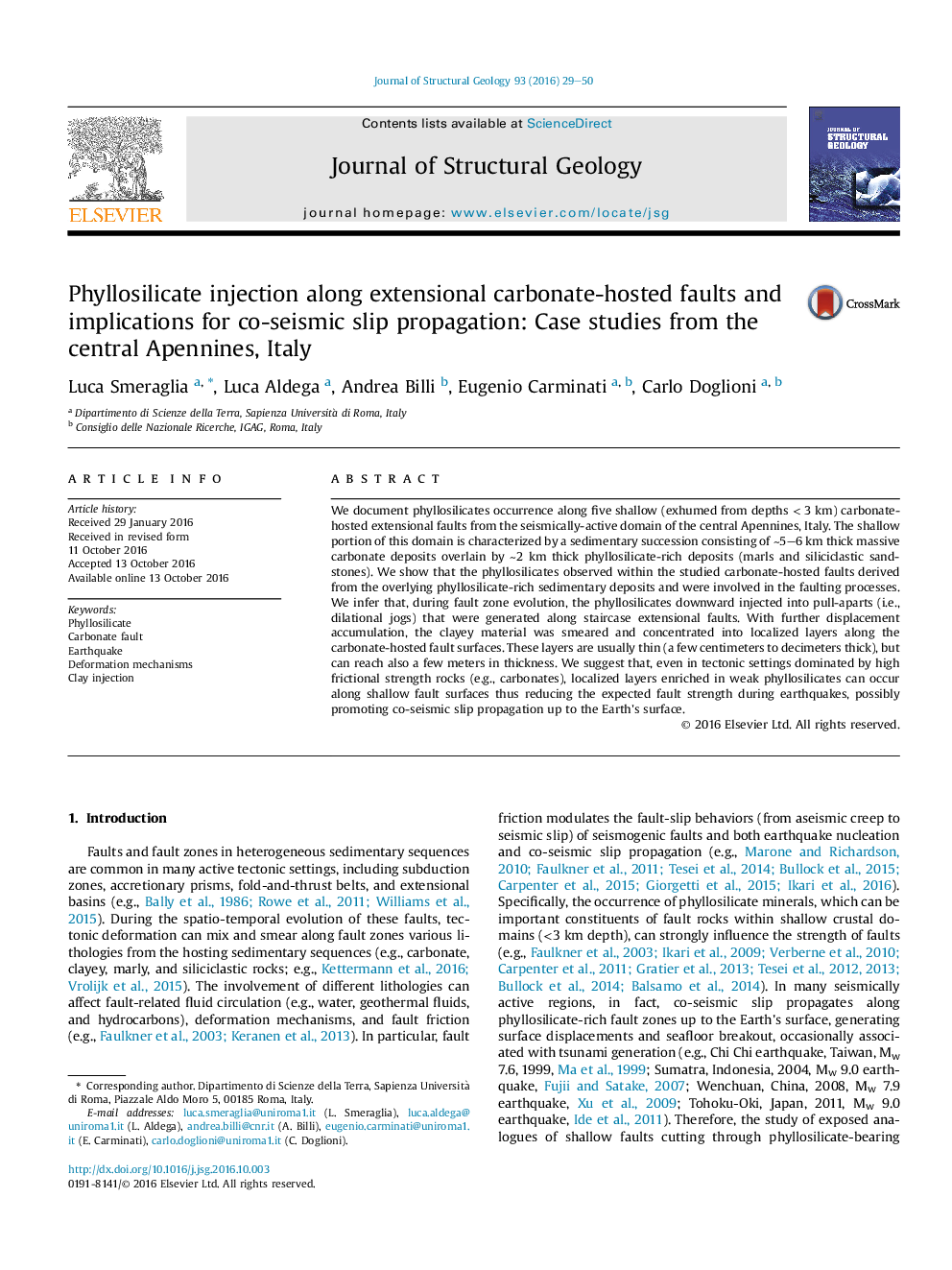| کد مقاله | کد نشریه | سال انتشار | مقاله انگلیسی | نسخه تمام متن |
|---|---|---|---|---|
| 4732907 | 1640487 | 2016 | 22 صفحه PDF | دانلود رایگان |
• Phyllosilicates occur into massive carbonate-hosted fault zones in central Apennines.
• Phyllosilicates injected from clay-rich deposits at the top of the sedimentary sequence.
• Phyllosilicates concentrate along narrow layers and/or mix within fault rocks.
• These layers can facilitate earthquake-slip propagation and surface faulting.
We document phyllosilicates occurrence along five shallow (exhumed from depths < 3 km) carbonate-hosted extensional faults from the seismically-active domain of the central Apennines, Italy. The shallow portion of this domain is characterized by a sedimentary succession consisting of ∼5–6 km thick massive carbonate deposits overlain by ∼2 km thick phyllosilicate-rich deposits (marls and siliciclastic sandstones). We show that the phyllosilicates observed within the studied carbonate-hosted faults derived from the overlying phyllosilicate-rich sedimentary deposits and were involved in the faulting processes. We infer that, during fault zone evolution, the phyllosilicates downward injected into pull-aparts (i.e., dilational jogs) that were generated along staircase extensional faults. With further displacement accumulation, the clayey material was smeared and concentrated into localized layers along the carbonate-hosted fault surfaces. These layers are usually thin (a few centimeters to decimeters thick), but can reach also a few meters in thickness. We suggest that, even in tectonic settings dominated by high frictional strength rocks (e.g., carbonates), localized layers enriched in weak phyllosilicates can occur along shallow fault surfaces thus reducing the expected fault strength during earthquakes, possibly promoting co-seismic slip propagation up to the Earth's surface.
Figure optionsDownload high-quality image (347 K)Download as PowerPoint slide
Journal: Journal of Structural Geology - Volume 93, December 2016, Pages 29–50
